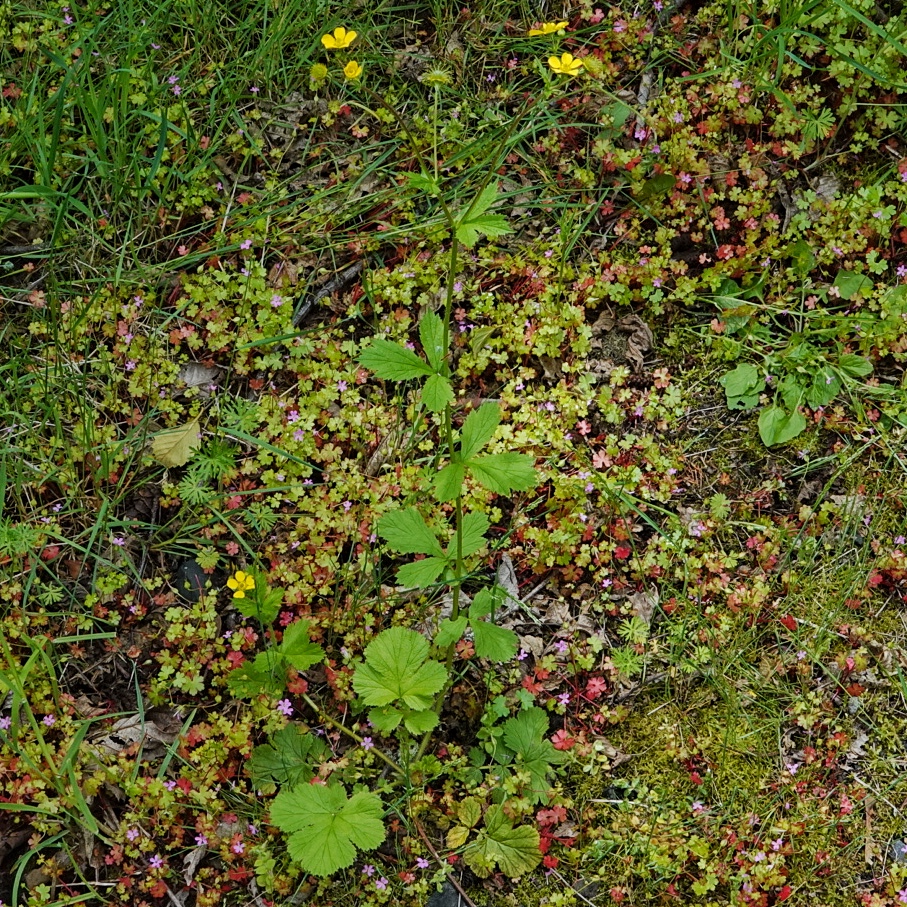
I don’t know where I got this idea, but I had been under the impression that Geum macrophyllum was an introduced species. Possibly it was because I saw that it was native to Eurasia, but missed the part about it being Holarctic. Maybe it’s because it is often weedy, and in disturbed ground. Regardless of how I got that notion it was a very pleasant surprise when I realized, during the research for this profile, that it was a native plant, because I see it everywhere.
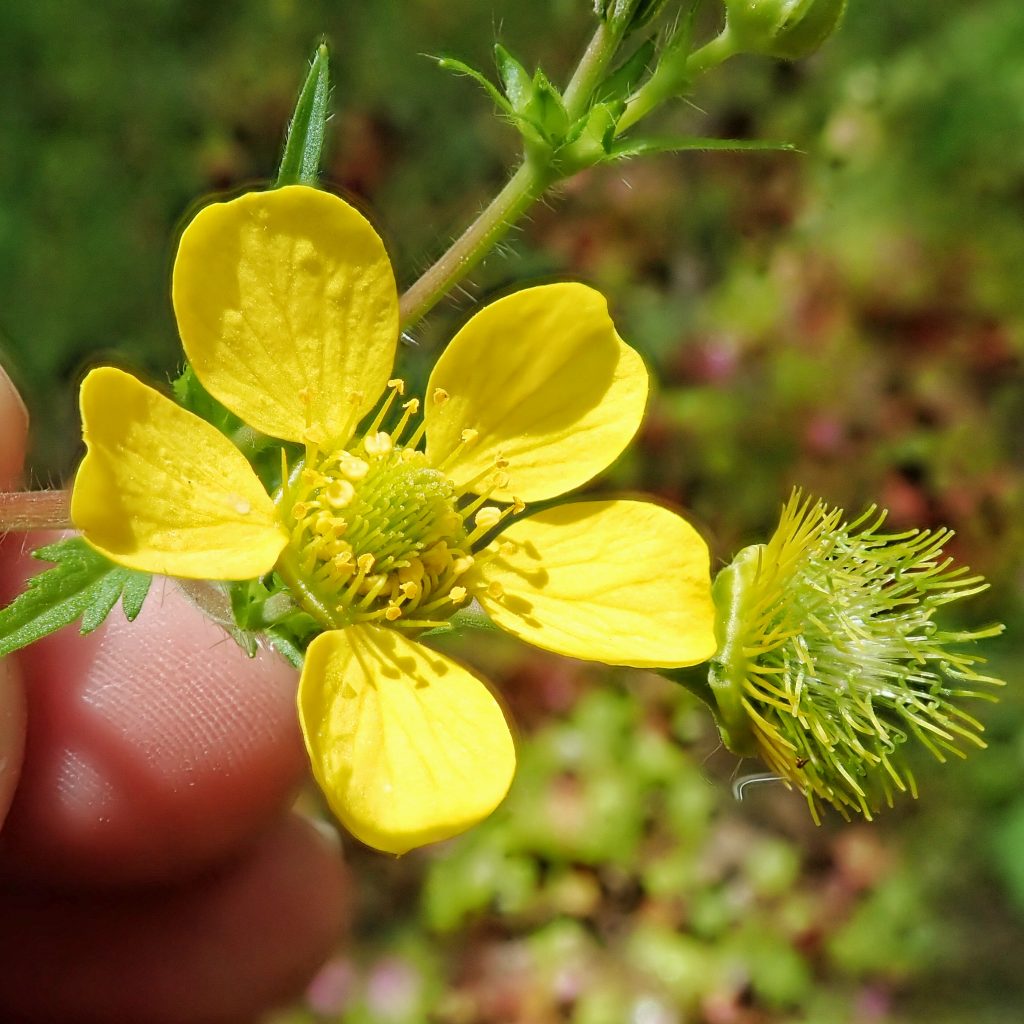
Even when I thought it was non-native, I’ve always had a fondness for this pretty member of the family Rosaceae. The flowers are delightful, the Velcro seed pod is very cool looking, the foliage has a nice texture, and it’s immediately recognizable by the long stalked basal leaf with its very large terminal leaflet.
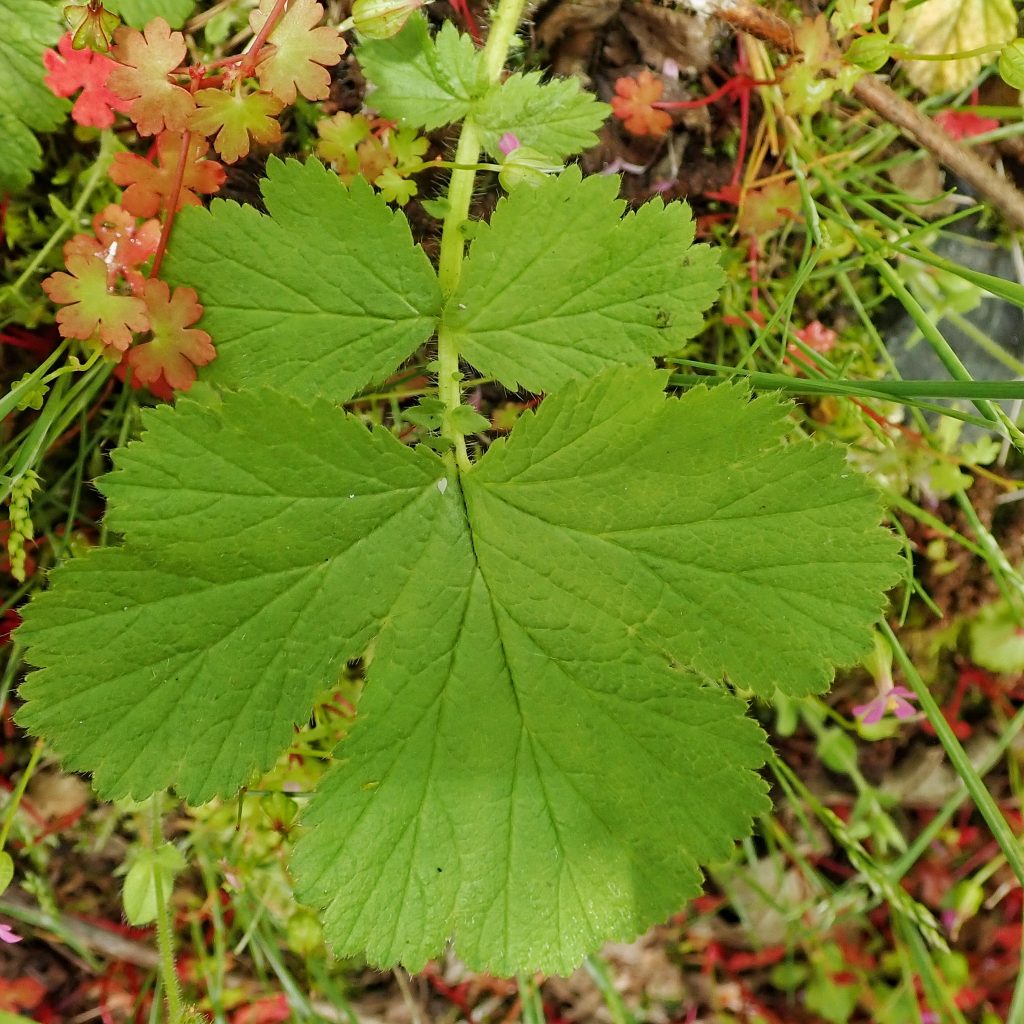
Large-leaved avens has been utilized medicinally in many different ways by a variety of indigenous people, including the Quileute, Chehalis, and Bella Coola tribes. The roots were used for stomach pain, after childbirth, to relieve the pain of teething in infants, and as a general medicine. They were also boiled to create a steam bath to treat rheumatism.
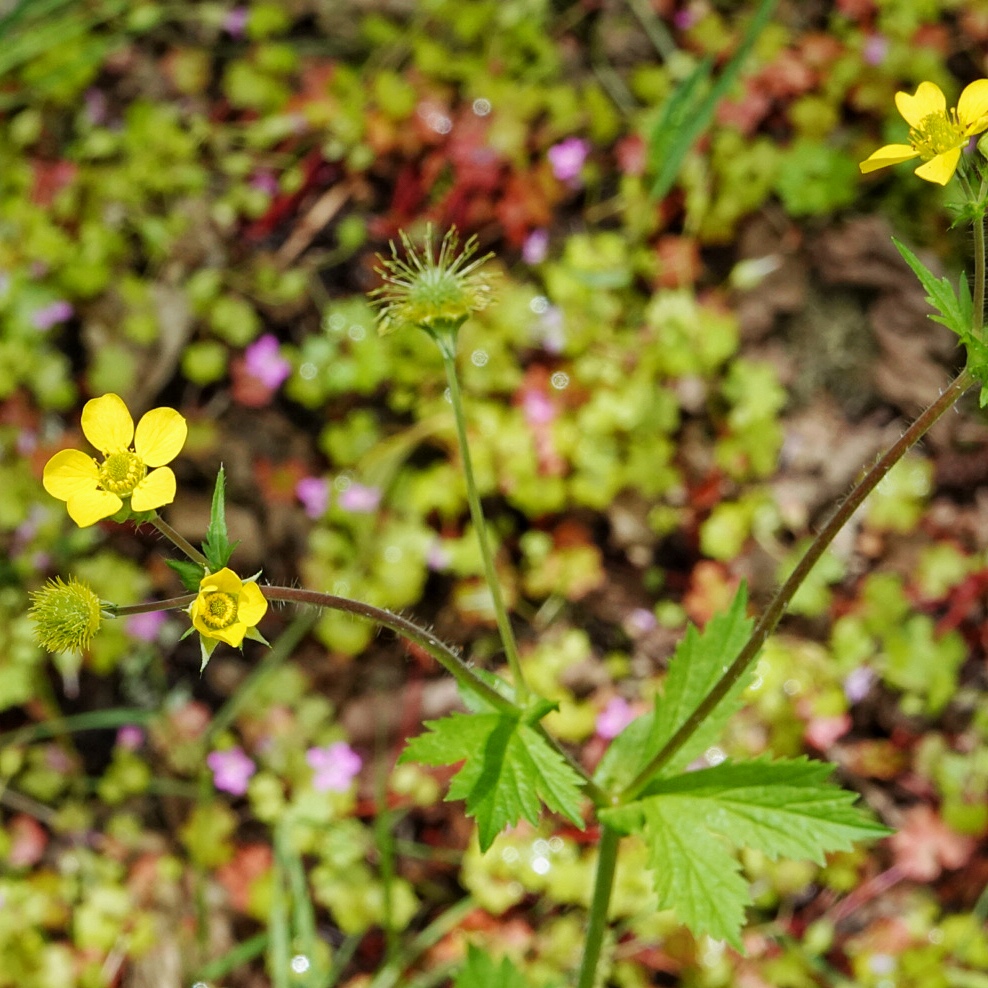
Boiled or chewed leaves were used in a poultice to treat boils, cuts, and bruises. Leaves were chewed as a ‘female remedy’, for contraception, to promote labor, and to heal the womb after childbirth, as well as fir general medicinal purposes. They also made tea from the whole plant for many of the above usages, as well as for a diuretic. And leaves were chewed before visiting the dying, as protection against that person’s illness.
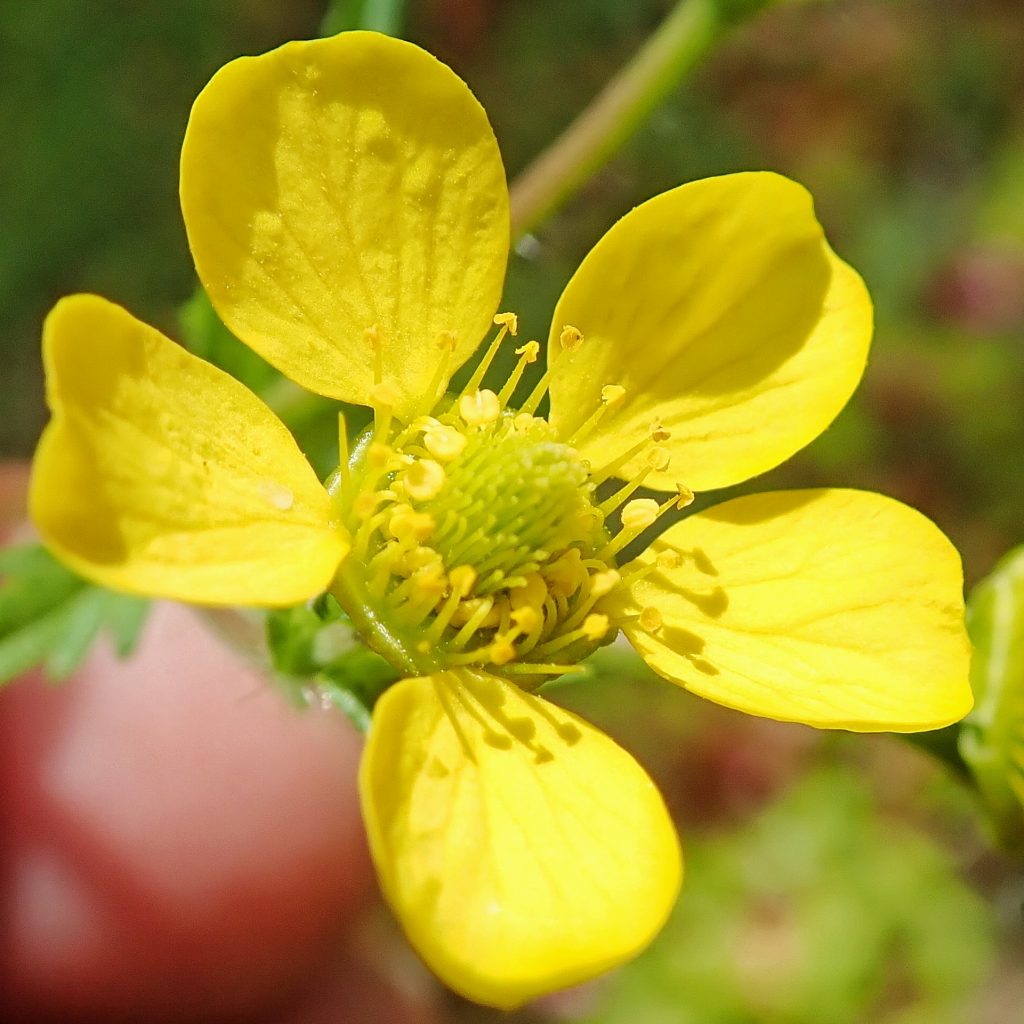
Description-This is a tall (up to 40”) perennial, with yellow flowers and a long basal leaf on which the leaflets get incrementally bigger and the terminal leaflet is much, much larger than the previous ones; stem leaves are in threes or deeply lobed, and are sessile or on short stalks; all leaf margins are coarsely toothed; yellow flowers have 5 spherical petals, spreading to reflexed sepals,and dozens of stamens, which become hooked as it fruits.
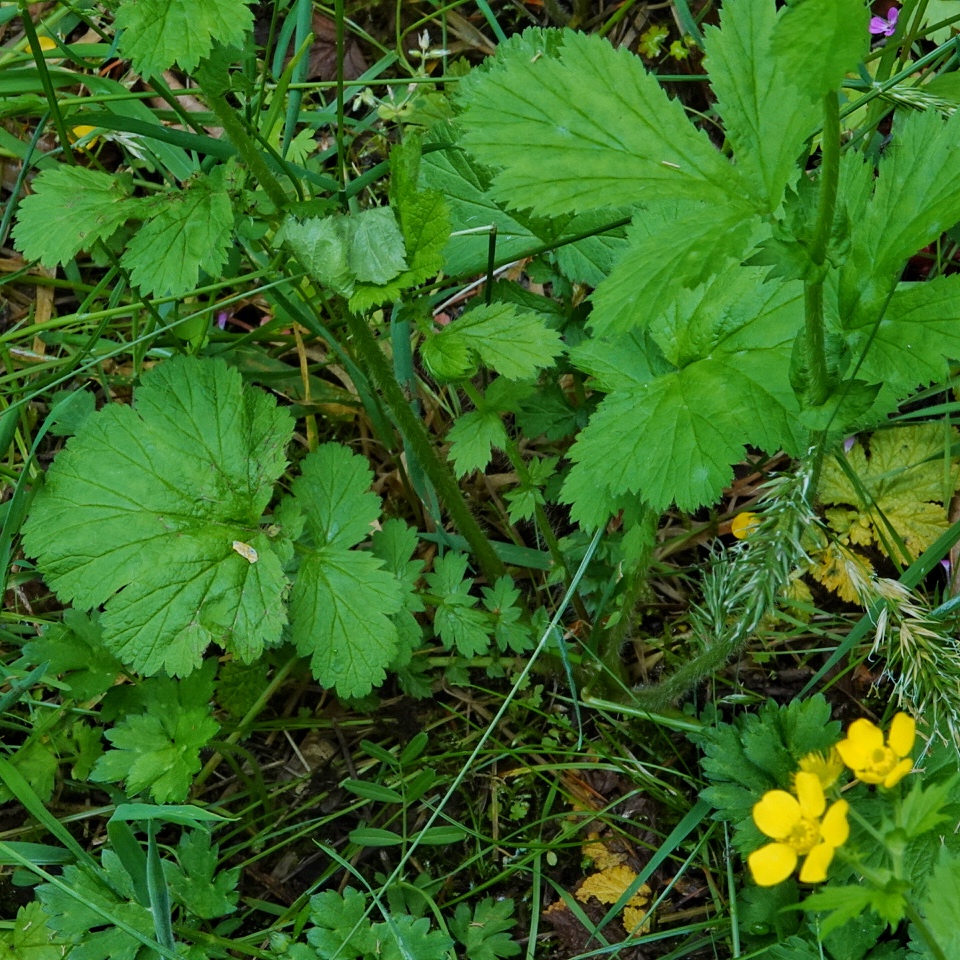
Similar species– Nothing else has the basal leaves with a terminal leaflet that is many times bigger that the lower leaflets.
Habitat– Moist to mesic forests, woodlands, and meadows up to 7,000’ elevation.
Range-Holarctic; region wide, except in the most arid parts of the interior.
Reproductive timing-April to August
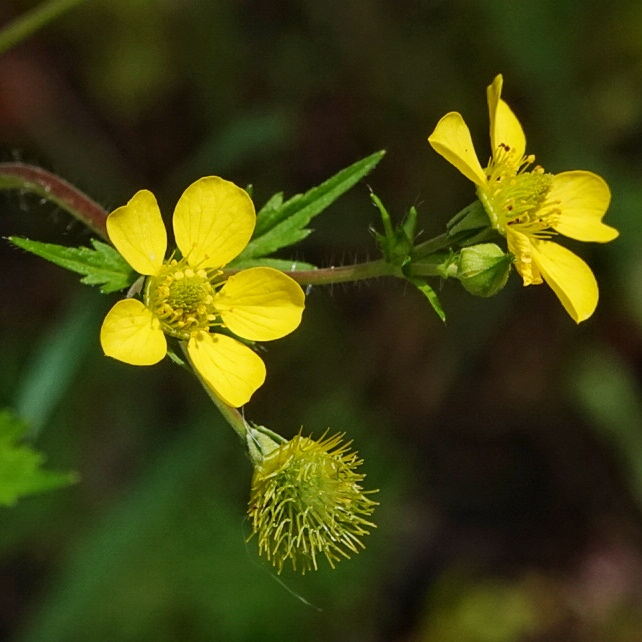
Eaten by-Larval host for the moths Diarsia rosaria and Dysstroma citrata; frequented by many, and those with UV receptors are guided in to the nectar by a UV reflective black spot.
Etymology of names–Geum is from the Greek word for ‘give relish’, and alludes to the high quality of the roots. It is the Latin name for the avens. The specific epithet macrophyllum is from the Greek words for ‘large leaves’. Avens was first used to describe this group of plants in the 13th century, and came from a French word for clover.

http://www.efloras.org/florataxon.aspx?flora_id=1&taxon_id=250100224
http://naeb.brit.org/uses/search/?string=Geum+macrophyllum+
https://www.pnwflowers.com/flower/geum-macrophyllum
https://www.fs.fed.us/wildflowers/plant-of-the-week/geum_macrophyllum.shtml
https://www.wnps.org/native-plant-directory/128-geum-macrophyllum
http://web.pdx.edu/~maserj/ESR410/Geummacrophyllum.htm
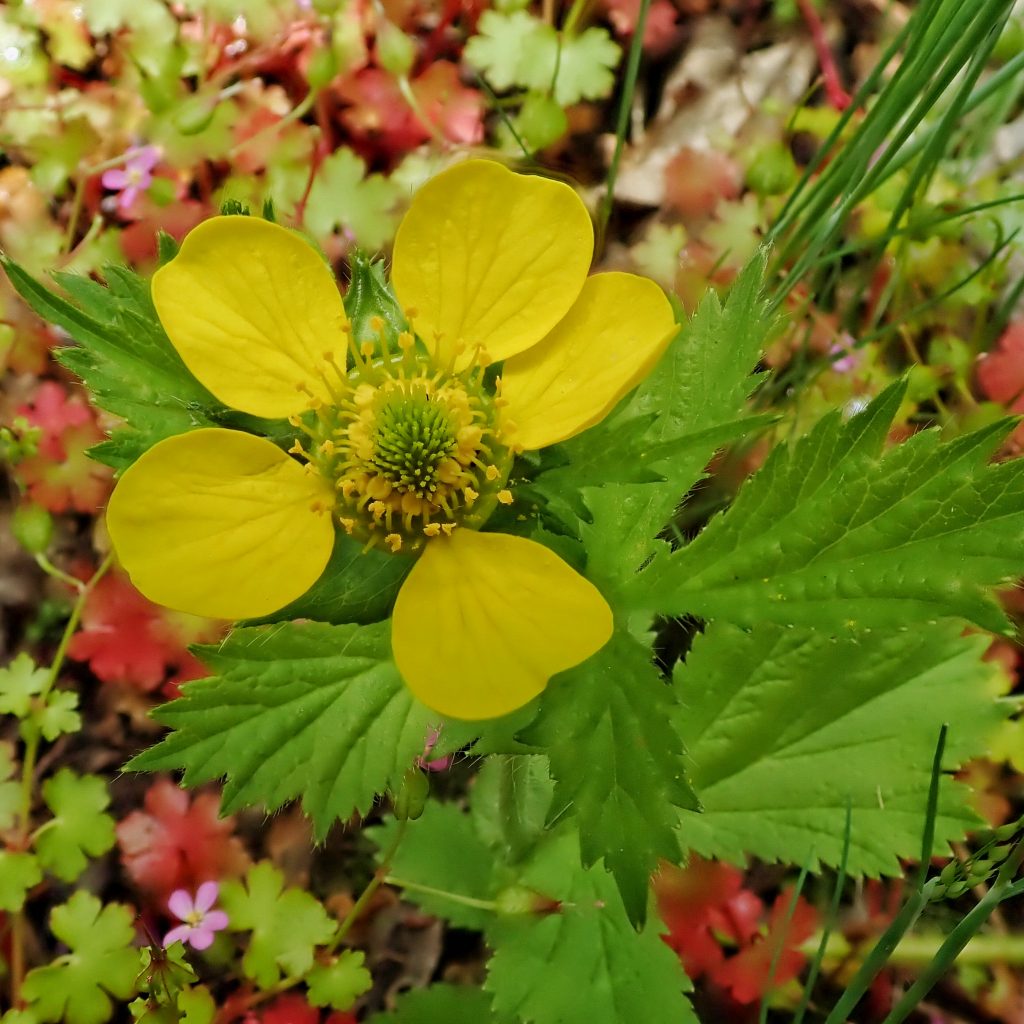
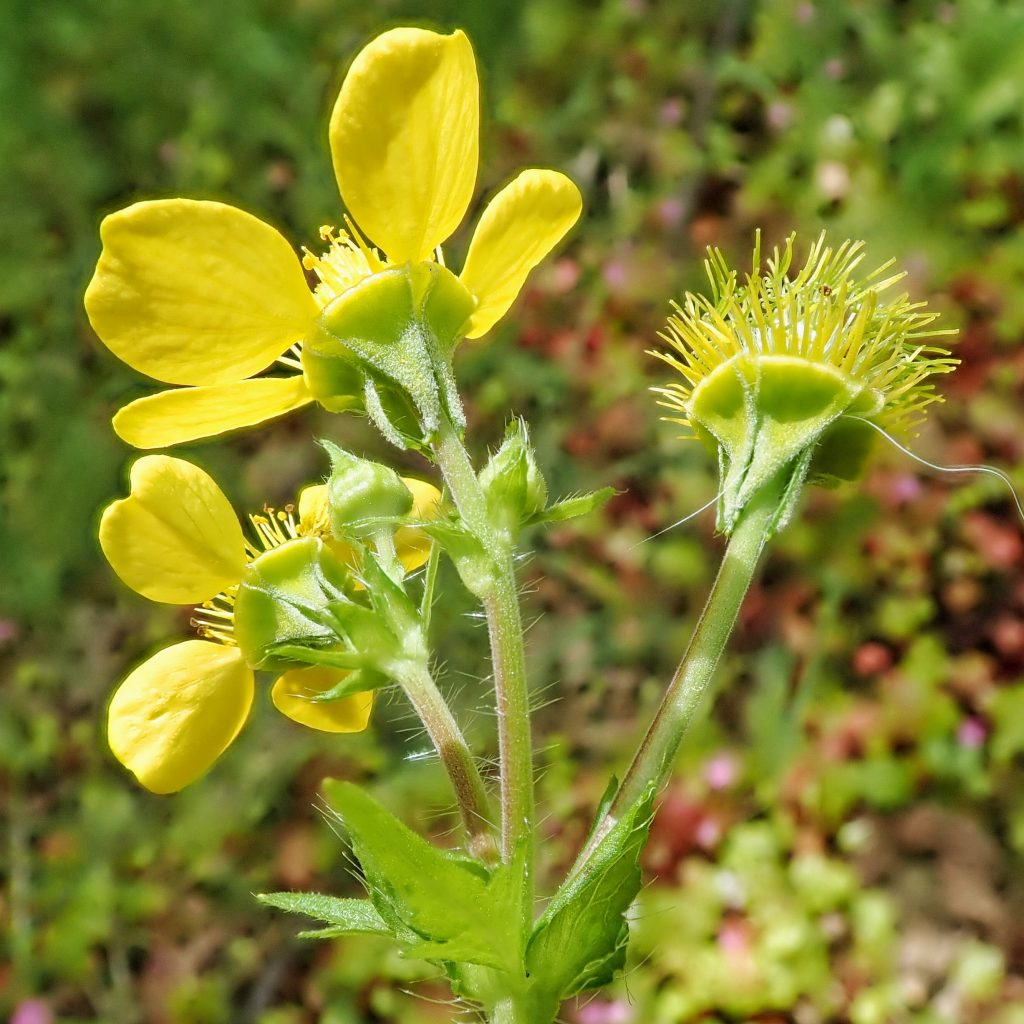
A friend of Dysstroma citrata is a friend of mine.
Yes, they are a beautiful moth!